The Q Terra Smartphone from Chinese manufacturer Qiku (pronounced “cheeku”) achieves an overall DxOMark Mobile score of 73 points for its still photo and video performance. Featuring a 13Mp (4160 x 3120 pixel) front camera, the Qiku Q Terra features two Sony 1/3.06”-type CMOS sensors. Referred to as a “duoscopic camera” by the manufacturer, the Q Terra captures images using both Sony IMX278 color and IMX214 mono sensors, and merges the two exposures together in processing to improve image quality.
For still photography, we found that the high-resolution sensor ensured excellent detail preservation in all lighting conditions, with the bright f/1.8-aperture lens helping maintain details in low light. It’s fair to say the Q Terra performs better in bright light, however, where you can expect generally accurate target exposures, good color rendering, and low levels of noise.
Achieving a Photo sub-score of 77, the Q Terra’s strongest results were for Exposure, Autofocus and Texture, but its score was taken down somewhat by high levels of noise, which are particularly noticeable in low-light images. For video, the Q Terra features 4K capture (3840 x 2160 pixel) at 30fps for detailed and high-resolution movies, which are most impressive in good light. With no visible video stabilization, no continuous autofocus, and a low frame rate in low light, the Q Terra’s Video sub-score of 64 points did not match its photo performance, however, making it better-suited for smartphone photographers primarily interested in taking stills.
Outdoors: Excellent texture and edge detail
Tested under a range of outdoor lighting conditions, we found that the Q Terra captured some bright and bold exposures with pleasant and accurate color. But in challenging high-contrast scenes, the device has a tendency to under-expose a little, which results in loss of detail that is particularly noticeable in darker and lower-contrast areas of the picture. Texture preservation and well-defined edges make it a good camera for shooting architecture or city landscape scenes. In uniform areas of color, such as the sky, a fine luminance noise is very visible, however. Some color shading is noticeable in outdoor pictures, too, and white balance accuracy can be a little inconsistent, with the colorcast shifting between pink and green on consecutive exposures of the same scene.
Indoors: Nice exposures under strong artificial lighting
Indoors, the Q Terra produces its best exposures when shooting under artificial light sources of 20 lux and brighter. Despite the f/1.8-aperture lens, pictures are under-exposed in very low-light conditions, as the device tries to maintain a reasonable shutter speed and not increase ISO sensitivity too much. For example, under a 20 lux light source, exposure settings of 1/14 sec and ISO 2000 result in a good exposure. Using a 10 lux light source, however, the Q Terra maintains the same 1/14 sec shutter speed (presumably because there’s no image stabilization), but increases the ISO to only 2200, effectively rendering the shot 1 stop under-exposed.
The good detail and texture preservation we observed on outdoor images persists indoors, too, with well-defined edge detail even in extreme low light. Noise is significantly more visible on indoor exposures, however, including more problematic chromatic noise appearing in some areas. Color remains bold and pleasant in many indoor exposures, but a noticeable white balance shift occurs depending on the light source. Under daylight-balanced lights, white balance is much colder/bluer compared to the warmer, more yellow colorcast that occurs when shooting under tungsten light sources.
Details: Explaining the score
Exposure and Contrast (81)
Recording a good selection of accurate target exposures when shooting outdoors and in bright indoor conditions, this was one of the Q Terra’s best results. It lost marks, however, due to under-exposure in some outdoor scenes and under extreme low-light conditions.
Color (77)
Images with an accurate exposure boast strong and vivid colors outdoors and indoors. Some color shading that shifts from a pink center to green at the edges of the frame is visible in many images, however.
Autofocus (82)
Featuring continuous autofocus in preview mode and auto scene detection, the Q Terra achieved its best category score for autofocus, which is fast and accurate in bright light. Some instabilities and oscillations are evident in low light, however, and autofocus is noticeably slow to trigger in dark conditions.
Texture (79)
Noise (68)
High levels of texture are recorded on the 13Mp sensor in both bright and low light, with well-defined edge details ensuring a solid score for texture. Noise is noticeable in many pictures, however, including a fine luminance noise in outdoor pictures, as well as some chromatic noise in low light, which affected the Q Terra’s overall score for noise.
Artifacts (76)
The Qiku Q Terra achieves a very respectable score for artifacts, with the most noticeable problem being a visible loss of sharpness in the outer field compared to the center of the frame. Viewing images at 100%, some unnatural color fringing is visible when shooting into the light, as well as strong ringing along contrast edges, and a colored moiré effect on high-frequency patterns.
Flash (75)
Using the Q Terra’s built-in dual LED unit, flash pictures offer good exposure, accurate white balance, and high levels of detail preservation in many images. Mixing flash with indoor tungsten light sources can result in under-exposure, which is consistent with our other low-light tests. Using flash as the only light source, most pictures were out of focus, as the Q Terra failed to find focus in the dark conditions, and a blue tint or color artifact is visible on the right-hand side of the frame.
Video (64)
Shooting video on the Q Terra is most successful in bright light conditions, where movies generally feature good exposure, excellent detail preservation, and low levels of noise. Color is slightly unsaturated compared to the bold and vivid hues captured in stills, however, and a blue colorcast makes videos shot in cloudy outdoor conditions look rather cold. As with stills, low-light videos are also under-exposed, with detail in dark regions or low-contrast areas becoming indistinct. The Q Terra also lost points in the video category due to its lack of continuous autofocus and visible autofocus overshoots using touch-to-focus. The apparent lack of any video stabilization results in visible high-frequency movements, as well as a jerky effect in low-light videos that are captured at a lower frame rate.
Photo Pros
- Good detail preservation in low light.
- Color rendering is pleasant in most lighting conditions.
Video Pros
- Low levels of noise in bright light.
- Target exposures are generally accurate, particularly in bright light.
- Good texture preservation in bright light.
Photo Cons
- High level of noise in all conditions, especially in low light.
- Color shading very visible in both indoor and outdoor pictures.
- Under-exposed pictures when shot in high-contrast and low-light conditions.
- Slow autofocus, with instabilities and oscillations.
- White balance is often inconsistent shooting both indoors and outdoors.
- Using flash as the only light source, camera fails to find focus most of the time.
- Noticeable difference in sharpness between the center and edges of the frame.
Video Cons
- No visible stabilization.
- Low frame rate in low light, with visible jerky effect.
- No continuous autofocus while recording.
- Visible autofocus overshoots with touch-to-focus, especially in low light.
- A pink cast is visible when shooting video under tungsten light sources.


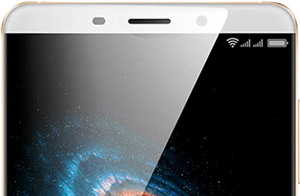


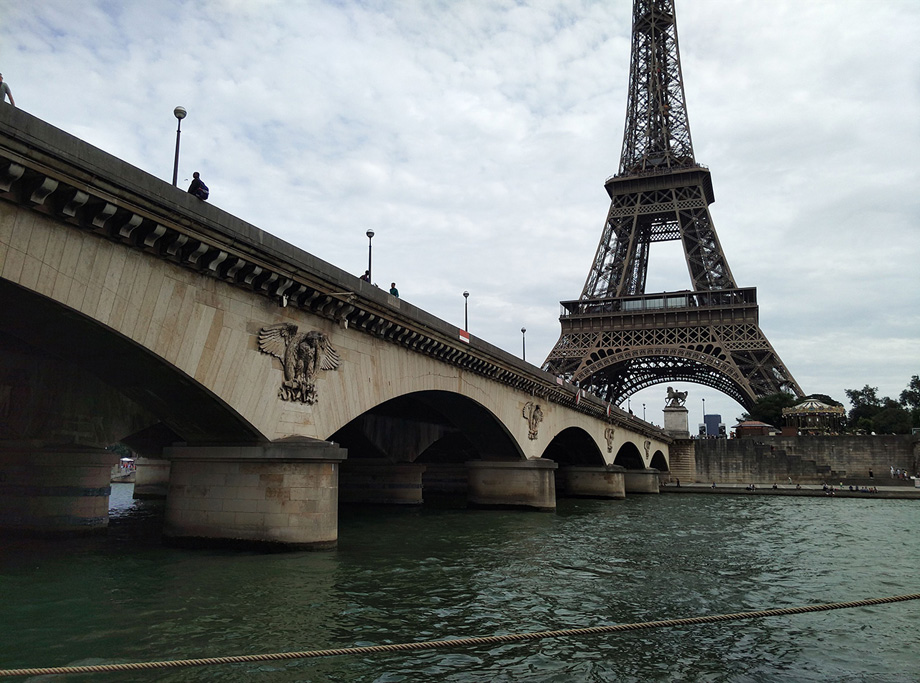
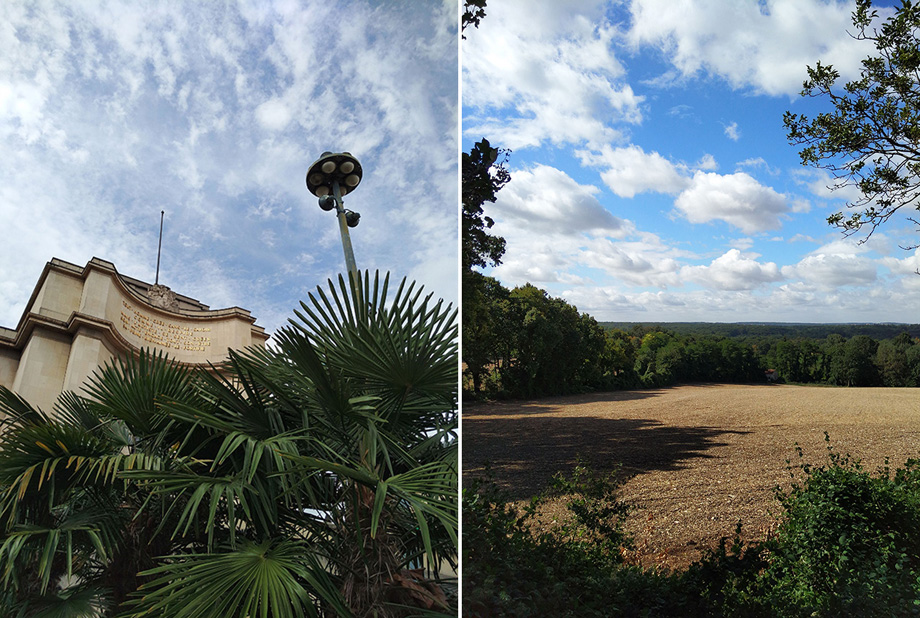
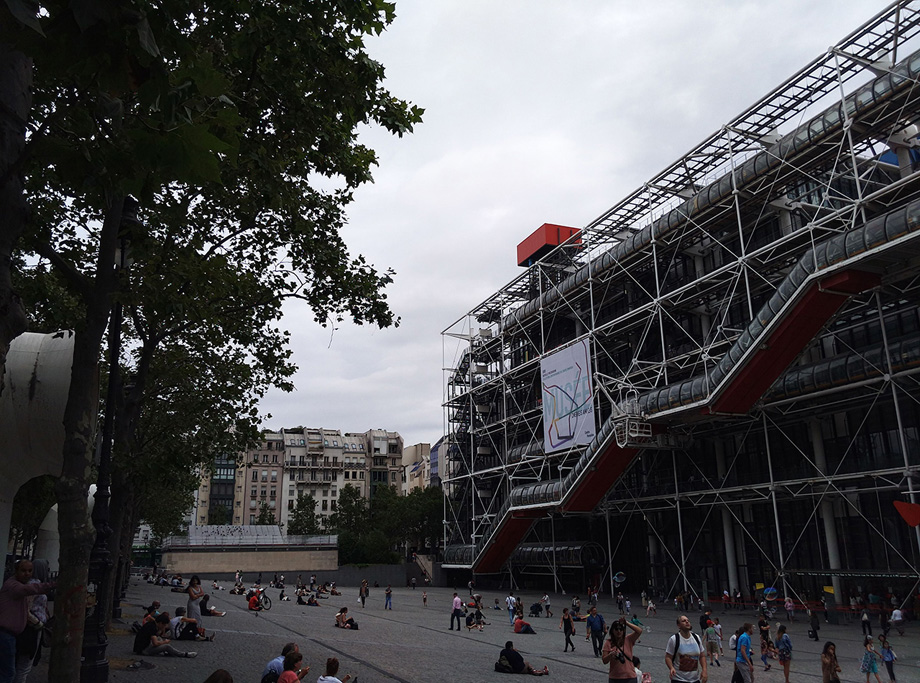
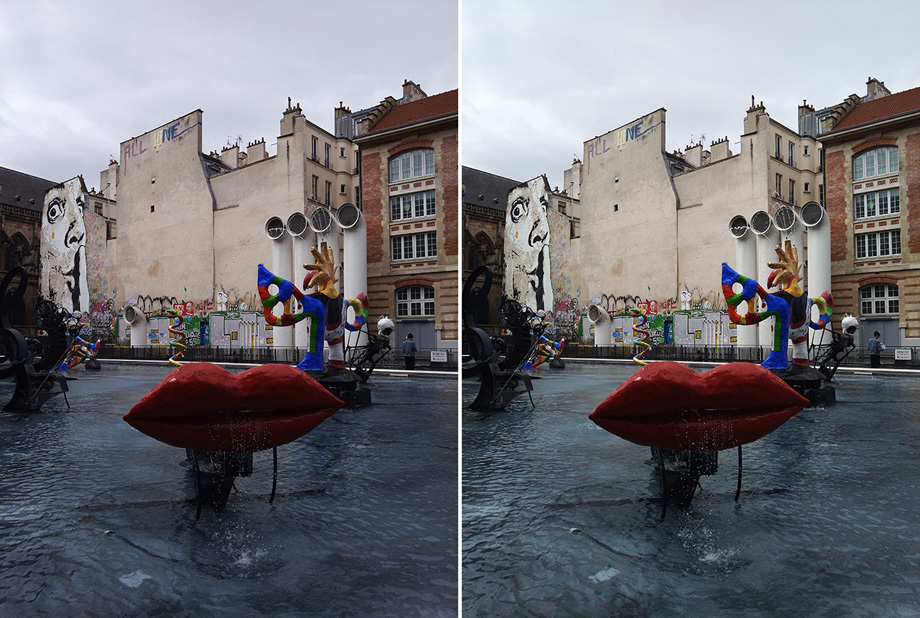
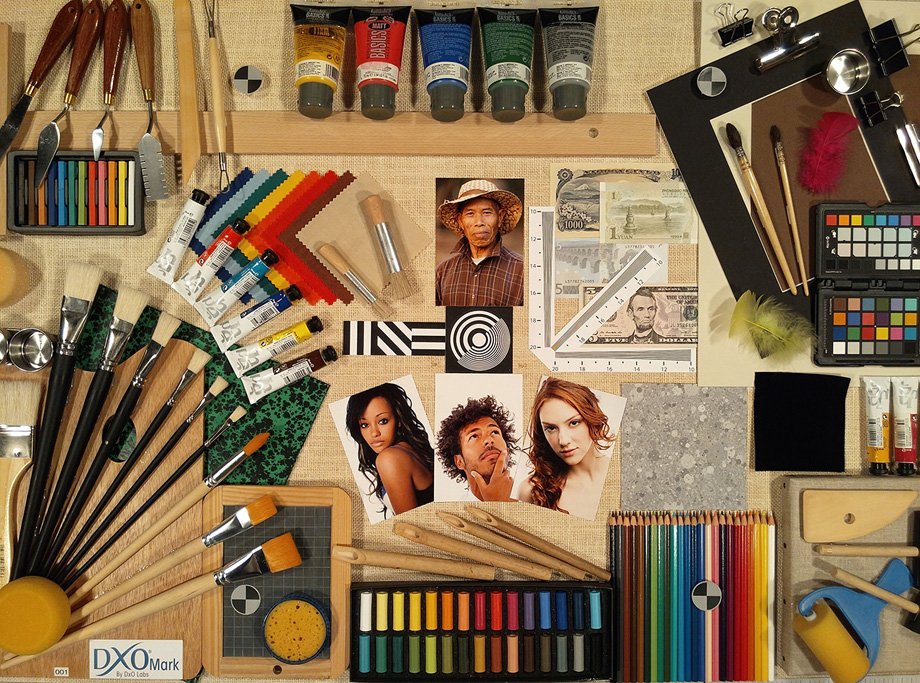

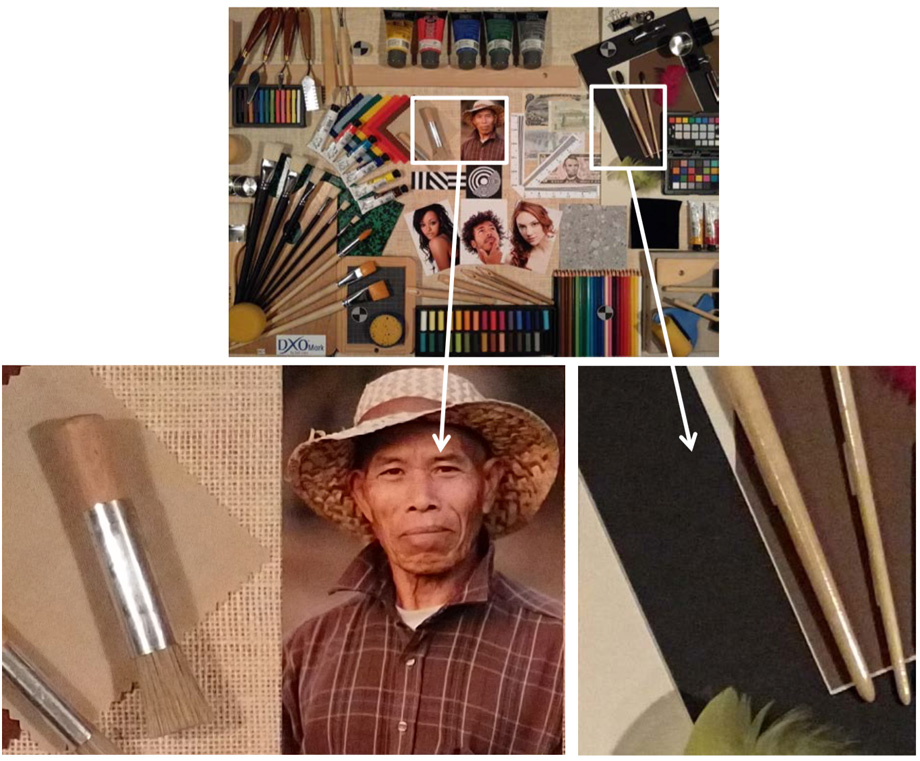
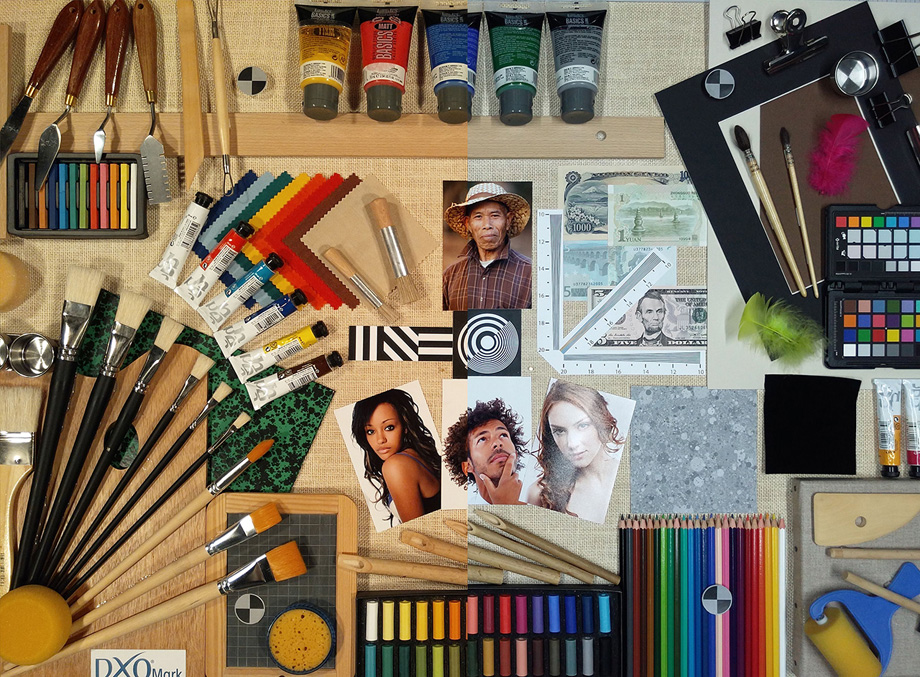
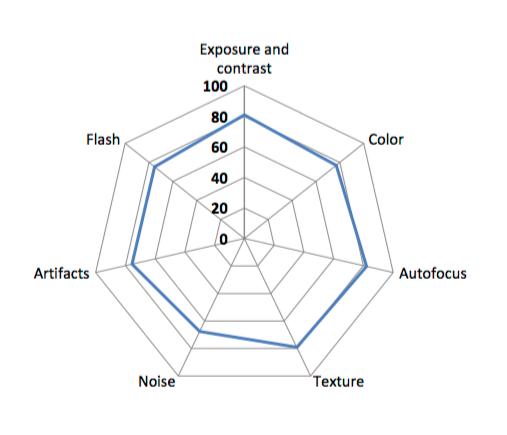

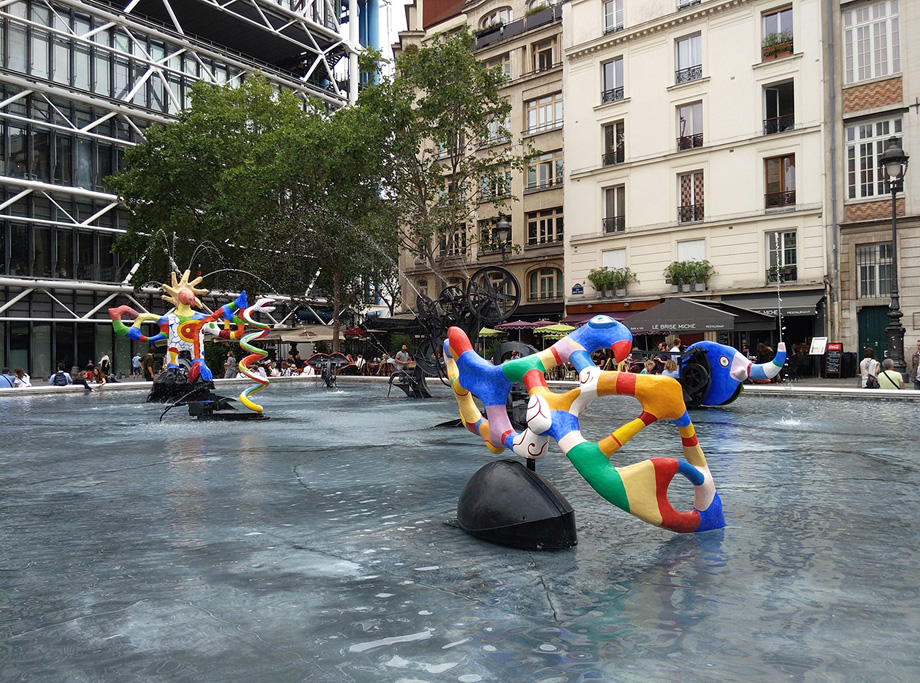
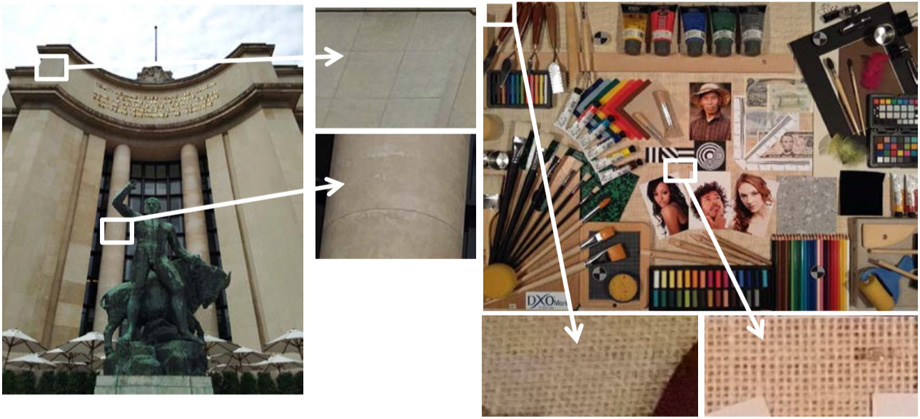

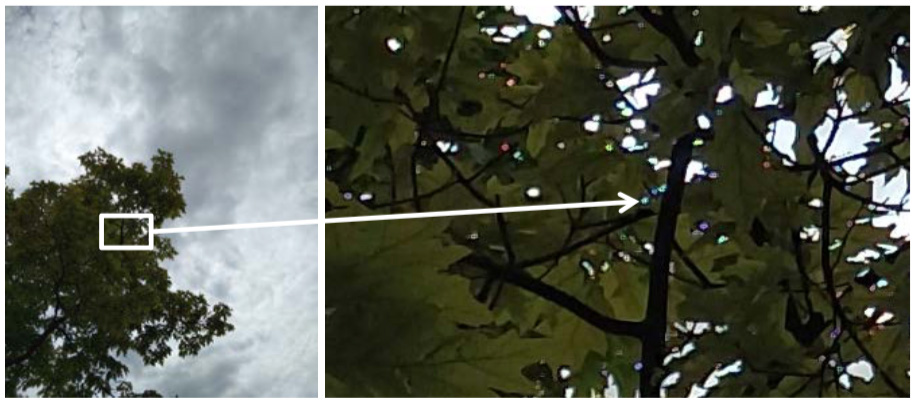

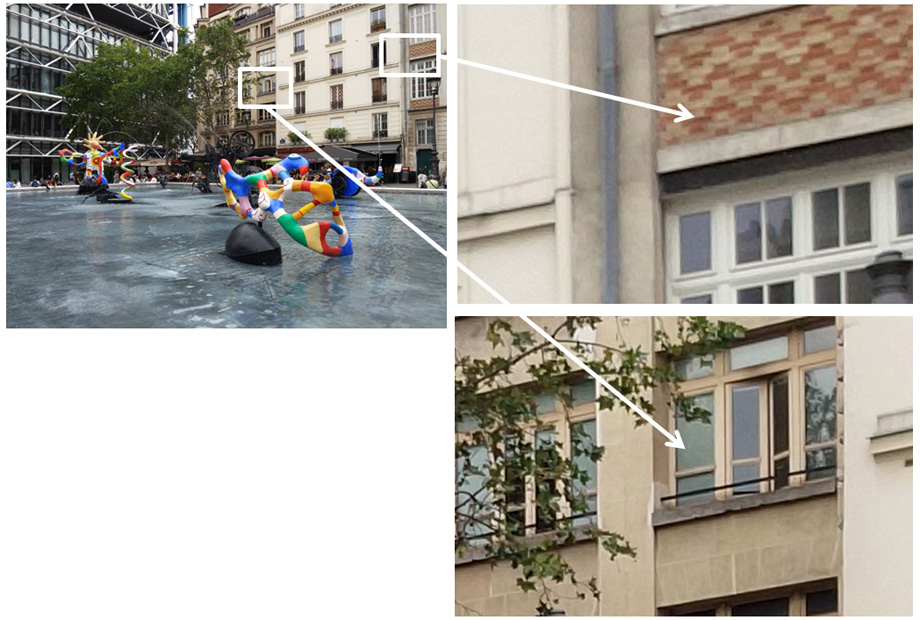

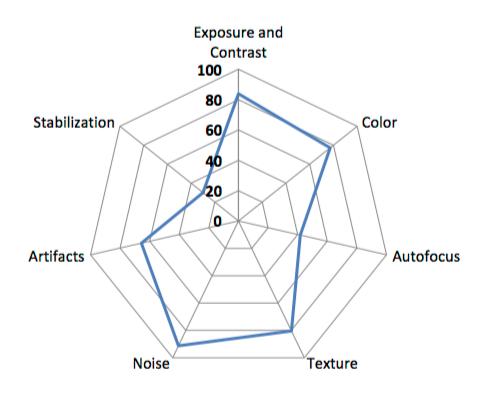
DXOMARK encourages its readers to share comments on the articles. To read or post comments, Disqus cookies are required. Change your Cookies Preferences and read more about our Comment Policy.